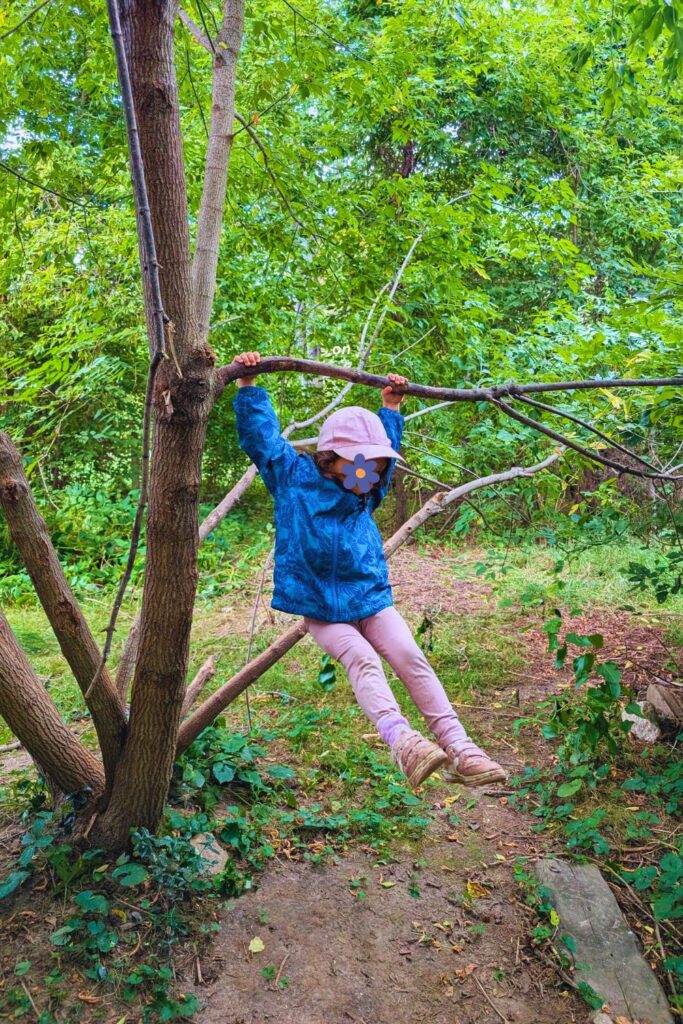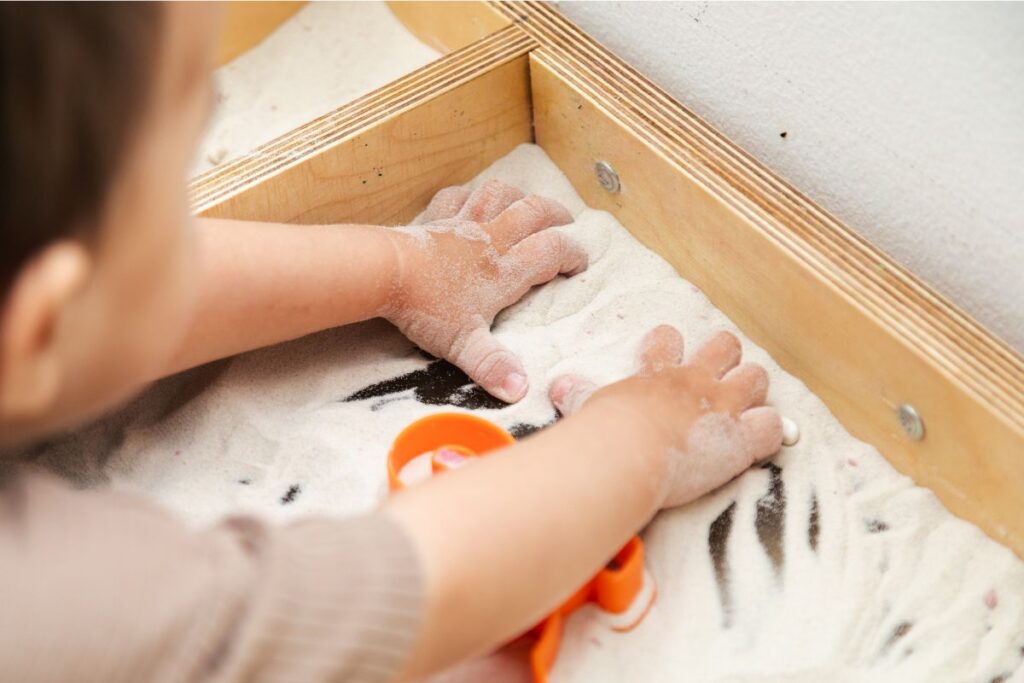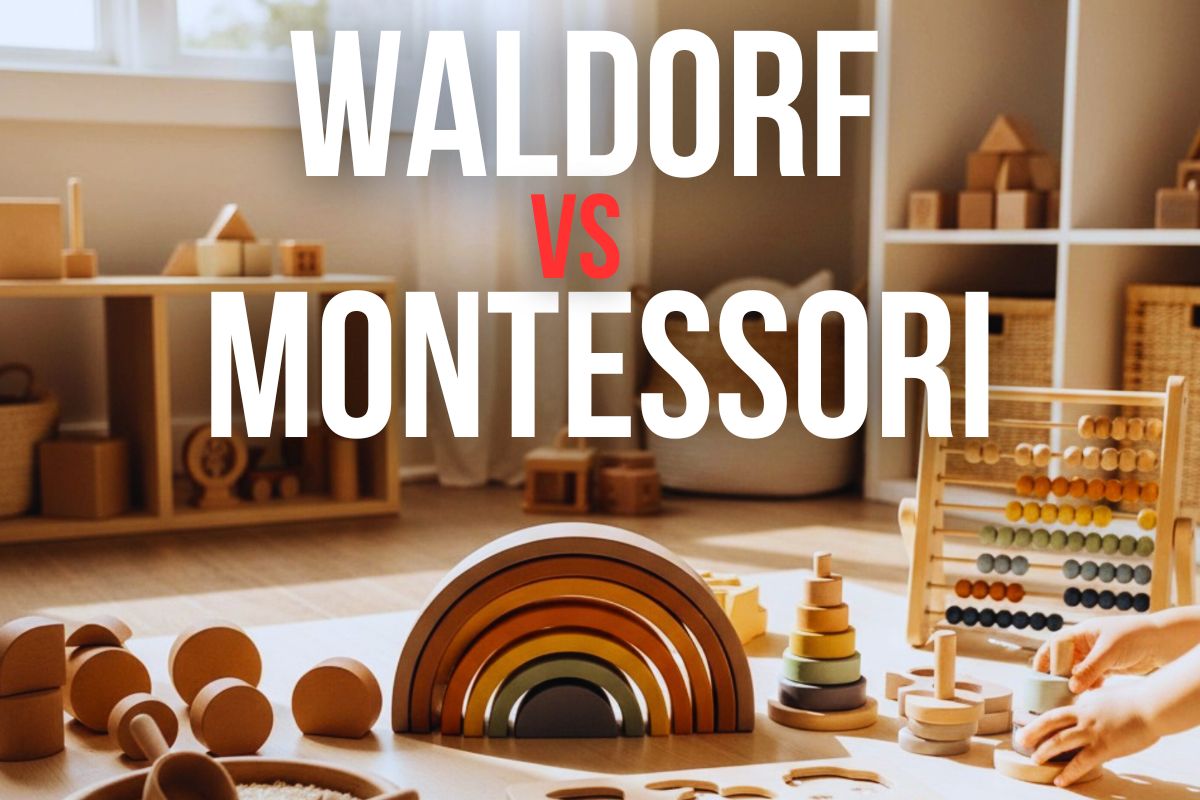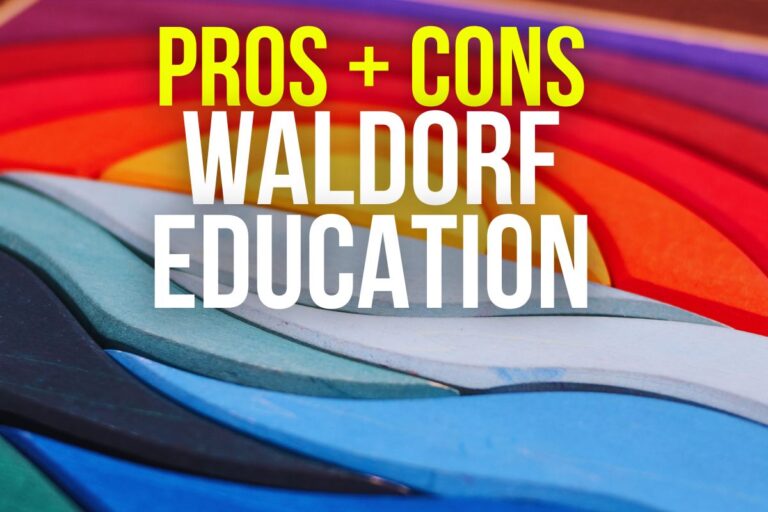Waldorf Education vs Montessori: Which Should You Choose?
The Misfit Teacher contains affiliate links which means that if you make a purchase using one of these links, I may receive compensation at no extra cost to you. Read my disclaimer for more information.
Trying to weigh your options between Waldorf and Montessori education? Let me help!
Having just enrolled my youngest child in kindergarten, I spent a lot of time weighing the pros and cons of Waldorf and Montessori education, trying to decide which one was better (especially, better for us and our child specifically.)
Here’s what you need to know:
✅ There is a lot of overlap between Montessori and Waldorf education
✅ They are both very beneficial in different ways
Your choice will likely depend on:
- Your personal preferences and values
- Your child’s interests and personality
- The specific schools for Montessori and Waldorf in your area. They all differ!
After showing you the 9 key differences that make Montessori and Waldorf different, you may have made up your mind. I will then share which one we chose.
Waldorf and Montessori: How They are Similar
✅ They both have a nature-based component
✅ They both pride themselves on being holistic and child-centred
✅ The child’s freedom of choice is a big component in both. The child’s activities are very self-directed, rather than being all dictated by a teacher
✅ They both tend to limit technology
✅ They were both developed by early 20th-century education experts (Maria Montessori, 1870-1952 and Rudolph Steiner, 1861-1925 )
✅ They both value the learning process over just the final product. They have less focus on achievements (like final grades) than mainstream schools tend to
How Waldorf and Montessori Differ
9 Key Differences that Make Montessori and Waldorf Completely Different
1. Waldorf has a miuch bigger forest component
While both are nature-based, Waldorf has a much stronger nature component than Montessori.
Not all Waldorf schools are forest schools, but they all have a huge forest component. Things like nature walks, gardening, working with soil tend to be worked into the curriculum.

Also, connection to nature is deeply embedded into northern European culture, where Waldorf originated.
While you can probably expect a decent amount of outdoor time from a Montessori school as well, the forest classroom is a big part of Waldorf education. (They often do morning rituals like circle time in the forest, and a big chunk of their day is spent outside.)
2. Montessori has a very special ‘classroom setup’
While there is an indoor-learning component to Waldorf, Montessori is more focused on its indoor learning environment.
The indoor Montessori classroom is basically the bread and butter of Montessori; it’s part of what makes Montessori Montessori.

The classroom environment is “the third teacher,” (according to Maria Montessori) because kids can take so much from it. The Montessori classroom is layed out in a way that allows children to be self-directed. You can read about the Montessori classroom layout here.
The indoor Waldorf classroom has similar toys to what you find in a Montessori classrooom, but the indoor Waldorf activities are a bit more guided by the teacher (story time, songs that they sing together, baking, etc.)
Montessori schools have some group activities too (they may sing songs, or do a circle time.) But, individual and self-directedness are key components to Montessori.
3. Montessori values mixed-age classes
Another key component of Montessori is having multi-age classrooms. It allows younger kids to be inspired and learn from older kids, and allows older kids to take on leadership roles with younger kids.
In many Montessori schools, you may find that your child is only going to have 1-2 other classmates that was her age (depending on the size of the class and the school); while the rest will be younger or older.
Waldorf schools have different classes interact but the kids tend to be in a group of kids the same age. The value of mixed-age classrooms is a classic Montessori thing.
4. Waldorf has a bigger art component
Waldorf is really big on arts, and they are woven into many aspects of the curriculum. They do drama, they sing a lot of songs, and they often paint with watercolours.

The older kids in Waldorf also learn artsy-type skills like sculpting, crocheting and knitting.
There is art available in Montessori too, but it’s less of an intended focus. The Montessori classroom may have art supplies available for kids who want to do art, but they don’t tend to have dedicated time for art classes.
5. They have very different approaches to how and when reading is taught
Montessori and Waldorf differ very much on how they approach reading and teaching literacy.
In a Montessori environment, the environment is set up to support reading whenever the child feels ready (even if it’s in early toddlerhood.)
Waldorf, on the other hand, tends to actively put off reading, and other formal academics until age 7.
Before you write off Walforf, keep in mind that putting off reading may not be a bad thing. It’s common practice in Scandinavian countries, including Finland which has some of the highest test scores in the world.
But, depending on what you believe or value, you may prefer one approach over the other. So, this difference could make or break the decision for you.
6. In general, one is more play based, while the other is more cognitive and academic
I bet you can guess which is which, by now.
Waldorf is more focused on play-based learning in the early years, until age 7.
While there is play in Montessori as well, play based may not be the best way to describe Montessori education. The play tends to be explorational and purposeful in a Montessori classroom, as well as individual.
7. Waldorf is a bit more collaborative, whereas Montessori is more individual
There are benefits to both Waldorf and Montessori, but when it came down to it – this is a big part of what makes them different.
Waldorf focuses more on collaboration, whereas Montessori is more individual-based.
In a Waldorf classroom, you might see kids doing chores together, playing together. They do things like bake bread as a group, care for farm animals, etc.
In a Montessori classroom, each child gets to choose what they do and they tend to be working independently.
7. Montessori is much more common globally
There are more Montessori schools around the world than Waldorf schools -like way, way more.
There is said to be over 20,000 Montessori schools in over 150 different countries, whereas Waldorf only has over 2,000 schools in 75 different countries.
So, this makes Waldorf a lot more rare – however, Northern Europe is the exception: in countries like Sweden, Finland, Iceland, Denmark, Waldorf is much more common than Montessori.
This may change however, as there seems to be a surge in popularity of Waldorf schools around the world recently. Montessori for instance, has been in Canada forever, my mom thought of sending me to one – recently though, Waldorf schools have started popping up here too.
8. Waldorf receives much more criticism than Montessori
Waldorf is often criticized for being woo-woo, spiritual and hippyish. Read the pros and cons of Waldorf here.
Montessori gets its criticisms too, just less so than Waldorf. Montessori is more aligned with science and data (Maria Montessori herself was a doctor) than Waldorf is, so it’s harder to argue with.
Montessori also doesn’t have a ‘spiritual practice’ associated with it like Waldorf does, so you have less people that say its crazy, creepy, or things like that.
I should add – Waldorf doesn’t have a religion either, but when people talk about the “religion” it has, they mean anthroposophy which is a philosophy that has a bit of spirituality woven into it. It’s bascially about human’s connection to the universe. You can read about it here and decide if it’s something you utterly detest or don’t mind.
Waldorf vs Montessori: How We Chose
In the end, we chose to send our daughter to a Waldorf school- partly because the education philosophy speaks to me more, but also; the school itself that we had access to was better than our Montessori options.
This is something to always consider. You can choose between the two education philosophies, but you should always look at each individual school. In the end, the quality of education depends on how the school is run, and its teachers.
Having said that, here are the reasons Waldorf education speaks to me more, personally:
- The outdoor, play based learning was what I wanted for my daughter in the early years. I’ve read many books on education and I’m a big believer in the benefits of play based learning
- The connection to nature. Maybe it’s because I had Swedish grandparents that taught me to love the outdoors, but the access to forest and the time they’d spend in it sold me on our Waldorf school. In addition, my daughter loves being outside
- The collaboration component of Waldorf is also part of what sold me on it over Montessori. I feel like my daughter can spend plenty of time at home doing individual enrichment activities, whereas school is a great time to do collaborative activities with her peers
The Bottom Line: How to Choose Between Waldorf and Montessori
Both of them are great, depending on how you look at it and what your values are. It’s been my goal to present this article completely unbiased benefits of each and how they’re differnet.
Remember that its not just about Waldorf or Montessori; its also about which school you like better in your area. I do prefer Walforf education philosophy, but the Waldorf school in our area was also much better than the Montessori school we had access to – so our decision was easy.
But, when it comes down to it, I think your final decision will depend on the school itself.



